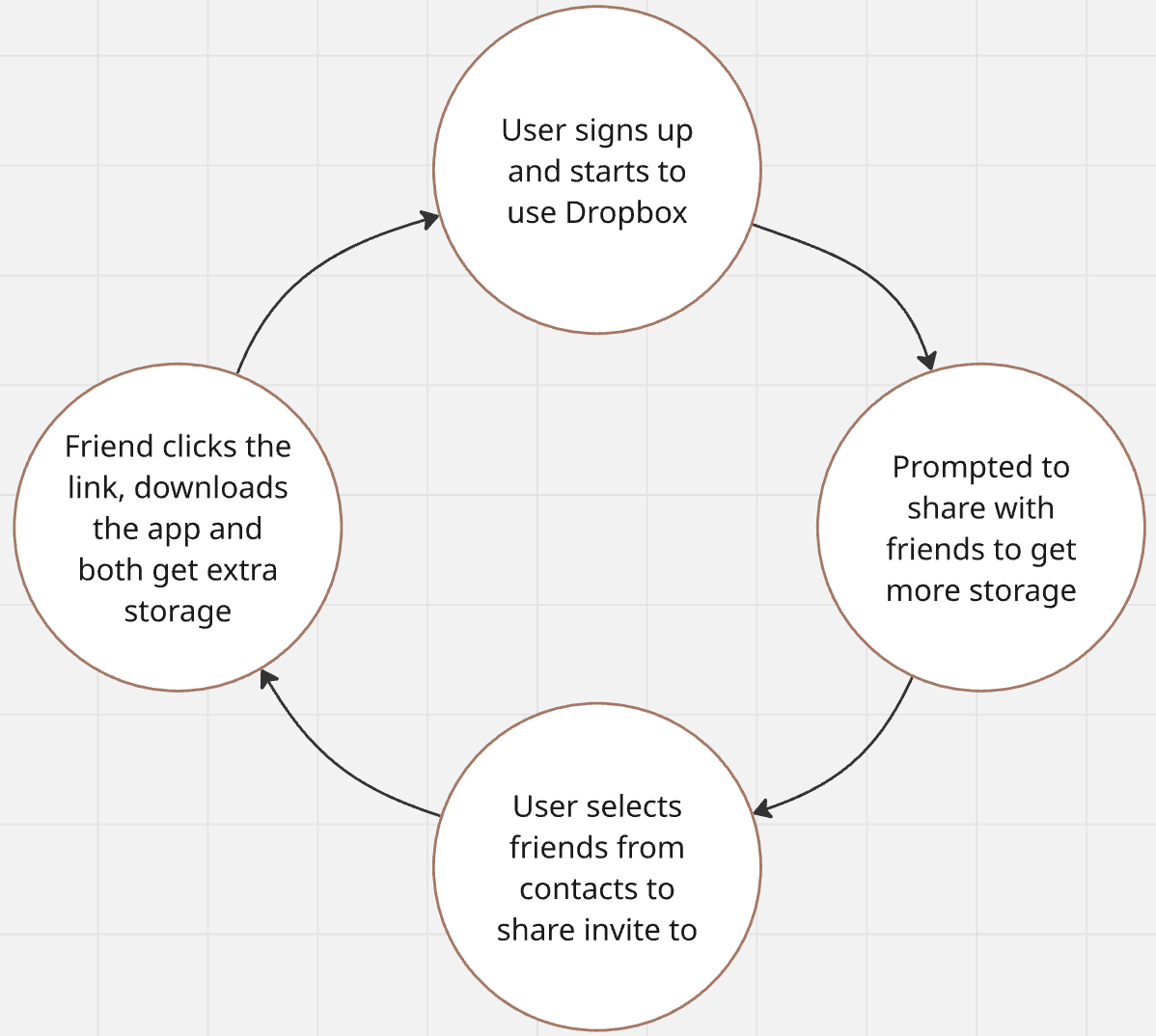A few weeks ago, I mentioned growth loops in passing—and got a load of messages asking for more.
So here it is: a deep dive into the compounding magic of growth loops, how the best companies use them, and how to make them work for you.
Funnels are dead. The best companies use growth loops.
Funnels are linear: acquire a user, convert them, repeat. But real growth isn’t linear—it compounds.
Growth loops are self-reinforcing systems where every user action feeds the next, creating momentum.
Here’s how they work:
User action generates an output (new users, content, revenue).
That output is reinvested into the system to drive more users.
The loop repeats, compounding over time.
Think TikTok: A user posts a video → it’s seen → others join and post → repeat. It’s a loop, not a funnel.
The three growth loops you need to know
Viral loop example: Dropbox
Viral loops rely on users inviting others, who then repeat the cycle.
Here’s a simplified example of how Dropbox did it:
Existing users invite friends in order to get more storage space free
Their friends sign up and get free storage when signing up
They use up their storage and invite their friends to get more storage
And so on..
Once Dropbox have the initial loop working, they focus on how to get it spinning faster, here are a couple examples dropbox use to do this:
Raising awareness of referral bonuses: Emails, in-app prompts and banners are ways Dropbox increase awareness of their referral scheme.
They understand that the more users that become aware of the incentive, the more will enter the funnel and the faster the loop will turn.
Demonstrated through a banner on their website:
Reducing the friction to share: Through offering more ways to share, it makes it easier for the user to do so and therefore increasing the likelihood they will share.
You can see this visualised here:
Content Loop example: Substack
Content loops build momentum when users create content that attracts more users—who become creators themselves.
Substack is a good example of how these loops work:
A new user signs up to Substack
The user begins to create content (podcast, blog etc.)
The content is distributed and begins to reach users (ranking on Google, Spotify etc.)
Potential new creators learn about Substack
New creators sign up to Substack
and so on..
Once Substack have the initial loop working, they focus on how they can get the loop going round faster, here are a couple methods Substack use to do this:
Make content easier to distribute: By making sharing easier, Substack increase the effectiveness of a creators content distribution.
Below is an example of this, an email sent to me with pre-created assets after publishing my last post on Yonder:
Education resources on distribution: Through educating creators on distribution techniques, Substack increase the chances users content will rank higher.
Here’s an example where Substack created a guide for creators to help them rank their content on search engines:
Paid loop example:
Paid Growth loops are where you run ads to bring in new users, the users begin to use the product and then as they become customers they generate revenue, which is then re-invested into running more ads.
One cycle of this loop is often referred to as ‘payback’ as a user cohort is repaying the cost invested to acquire them:
Similar to the other loop examples, there are plenty of ways to make this loop spin faster:
Attribution improvements: Improve attribution and you make better decisions on marketing budget distribution, this makes your ad spend more effective and your payback period shorter.
I wrote an article on this here:
Monetisation optimisations: Increase early revenue generation from cohorts of users you acquire and you payback faster, enabling more investment into advertising.
Typical ways of doing this are through conversion improvements, higher AOV or increased early retention.
How to Make Growth Loops Work for You
Identify your core loop: Which loop best fits your product?
Optimise each step: Reduce friction, amplify incentives, increase monetisation.
Measure and refine: Growth loops compound—small tweaks make a big impact over time.
Most companies burn cash chasing one-time wins. The best create systems that understand how every new user drives the next.











